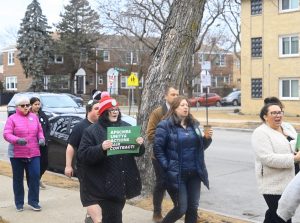Scientology Explored
October 3, 2012
In 1952, Hubbard used the Dianetics framework and published a new set of teachings as Scientology, a religious philosophy. In 1953, Hubbard incorporated the Church of American Science, Church of Scientology, and Church of Spiritual Engineering in Camden, New Jersey. On February 18, 1954, Hubbard gave his blessing to his followers to set up the first local Church of Scientology in California. They adopted the aims, purpose, principles and creed of the Church of American Science. Scientology spread through the United Sates and to other counties as Britain, Ireland, South Africa and Australia.
“The word Scientology is taken from the Latin scio, which means “knowing, in the fullest sense of the word,” and the Greek word logos, meaning “study of.” It literally means knowing how to know.” Dianetics was used as a counseling technique called auditing to help conscious recall of traumatic events in a person past. This was original to create a new psychotherapy. The intent of Dianetics was to free individuals of the influences of past traumas by systematic exposure and removal of the engrams that was left behind in the events with a process called clearing.
In Scientology, the beliefs and practices are based on rigorous research, and its doctrines are accorded scientific laws. The Church of Scientology says, “Scientology works 100 percent of the time when it is properly applied to a person who sincerely desires to improve his life”. This can validate the values of the methods that apply though the personal experience. Hubbard said, “For a Scientologist, the final test of any knowledge he has gained is, ‘did the data and the use of it in life actually improve conditions or didn’t it?”
Scientology theories revolve around the thetan, the individualized expression of the cosmic source or life force. The Thetan is a true identity of a person – an intrinsically good, omniscient, non-material core capable of unlimited creativity. In the primordial past, thetans brought the material universe into being largely for their own pleasure. The universe has no independent reality, but derives its apparent reality from the fact that most thetans agree it exists. Thetans fell from grace when they began to identify with their creation, rather than their original state of spiritual purity. Eventually they lost their memory of their true nature, along with the associated spiritual and creative powers. As a result, thetans came to think of themselves as nothing but embodied beings. Thetans are reborn time and time again in new bodies through a process called “assumption” which is analogous to reincarnation.
Scientology believes that people have hidden untapped abilities. It is believed that increased spiritual awareness and physical benefits are accomplished through counseling sessions referred to as auditing. Auditing helps people to solve their problems and free themselves of engrams. This restores them to their natural condition as thetans and enables them to be at cause in their daily lives, responding rationally and creatively to life events rather than reacting to them under the direction of stored engrams.
Auditing is a one-on-one session with a Scientology counselor or auditor. This would be similar to confession or pastoral counseling. Auditors record and store all information received and do not dispense forgiveness or advice. The auditor’s task is to help a person discover and understand engrams, and their effects on a person. Usually an auditing requires an E-meter, a device that measures minute changes in electrical resistance through the body when a person holds electrodes. The auditor watches for changes in the E-meter to locate engrams.
Once the area is identified, the auditor will ask specific questions to help eliminate the engram. The E-meter will confirm when the engram’s charge has deteriorated and the engram was cleared. Individuals will then move forward and the focus of auditing moves from simple engrams to engrams of increasing complexity. At the advanced OT auditing levels, Scientologists perform solo auditing sessions and act as their own auditors.
A brief visit to the Church of Scientology included a test of one hundred and fifty question test. They then suggested take a course for 25 hours at 100 dollars called Success Through Communication. They even recommend books, such as, The Problems of Work and The Fundamentals of Thought. I spoke with a woman that studies Hinduism and she said that it helped to excel her faith.
But is scientology a religion? Tom Cruise and John Travolta believe so. Oxford defines religion to be the belief in and worship of a superhuman controlling power, especially a personal God or gods. People should take chances in life. They should be open to new experiences but cautious and informed. Scientology is not a religion but a way to become a better person.







